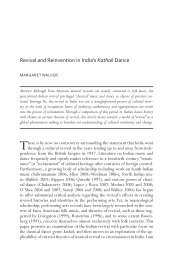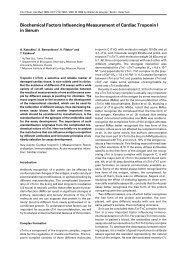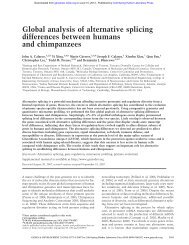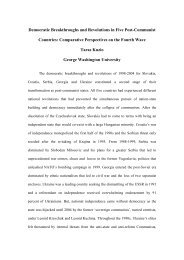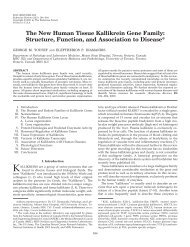The Socio-Economic Importance of Scientific Research To Canada
The Socio-Economic Importance of Scientific Research To Canada
The Socio-Economic Importance of Scientific Research To Canada
Create successful ePaper yourself
Turn your PDF publications into a flip-book with our unique Google optimized e-Paper software.
<strong>The</strong> <strong>Socio</strong>-<strong>Economic</strong> <strong>Importance</strong> <strong>of</strong> <strong>Scientific</strong> <strong>Research</strong> to <strong>Canada</strong> Page 36© David A. Wolfe and Ammon Salteranother series <strong>of</strong> policy documents outlining its broader economic agenda. <strong>The</strong> frameworkdocument issued by the Department <strong>of</strong> Finance (cited in the introduction to this paper) stressedthe role that it saw for innovation policy as one <strong>of</strong> the four pillars <strong>of</strong> its economic agenda. Acompanion document issued by Industry <strong>Canada</strong>, Building a More Innovative Economy, placedthe government’s S&T initiatives within the context <strong>of</strong> its broader economic agenda. Policyinitiatives were to be pursued in four key areas: trade, infrastructure, technology and theclimate <strong>of</strong> the marketplace. Of the four key areas, the two most central to the concerns <strong>of</strong> thispaper are infrastructure and technology. In the area <strong>of</strong> infrastructure spending, the governmentindicated its strong intention to support the information highway. It highlighted itscommitment to regulatory reform in the area <strong>of</strong> telecommunications policy, its efforts to extendthe CANARIE network with capital spending and its support for the linking <strong>of</strong> all schools andlibraries in the country to the Internet through the SchoolNET program. With respect totechnology, it outlined some <strong>of</strong> the key issues to be addressed in the S&T Review, includingthe need for a more systematic approach to the commercialization <strong>of</strong> R&D, the need to developa strong scientific culture in <strong>Canada</strong>, the need to establish which scientific and technologicaldevelopments <strong>Canada</strong> should pursue, the need to ensure that federal labs play an effective rolein the commercialization <strong>of</strong> technology and the need for measures to promote the rapiddiffusion <strong>of</strong> technology to industry (Government <strong>of</strong> <strong>Canada</strong>, 1994c, p. 61).<strong>The</strong> federal budget for 1994 reflected some <strong>of</strong> the broad themes outlined in the policydocuments, but clearly further development awaited the outcome <strong>of</strong> the S&T Review. Chiefamong the measures announced were the cancellation <strong>of</strong> the KAON project, a revamping <strong>of</strong> thespace program, funding for the Canadian Technology Network, additional funds for theNational <strong>Research</strong> Council, along with a stabilization <strong>of</strong> funding for the Networks <strong>of</strong> Centres<strong>of</strong> Excellence and the Granting Councils. <strong>The</strong> first budget seemed to provide some degree <strong>of</strong>support for the directions promised in the Red Book. However, this sense <strong>of</strong> complacency didnot last long. In the next budget <strong>of</strong> February, 1995, the government signaled a change indirection away from the themes <strong>of</strong> the Red Book and towards a priority on deficit reduction.Not awaiting the outcome <strong>of</strong> the S&T Review, nor many <strong>of</strong> the other program reviews that hadbeen launched, it leveled a series <strong>of</strong> major cuts at program spending. <strong>The</strong> cuts were substantialacross the board and hardly any portfolio was spared, including the S&T one. Industry<strong>Canada</strong> was particularly hard hit, with expenditure reductions <strong>of</strong> more than 42 per centplanned over a two year period, including many <strong>of</strong> its subsidies to business. <strong>The</strong> budgets <strong>of</strong> thethree granting councils were not spared, with NSERC, SSHRC and the MRC all targeted formajor reductions. A recent estimate suggests that over the three years since, when budgets areadjusted for inflation, MRC has suffered a 17.9 per cent reduction, NSERC 11.8 per cent and36



